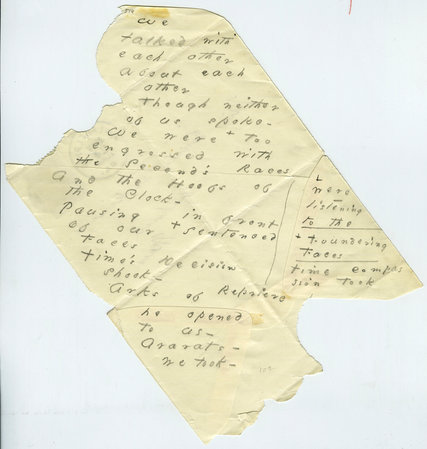 The University of Arizona Poetry Center and the Phoenix Art Museum present:
The University of Arizona Poetry Center and the Phoenix Art Museum present:
Artist’s Talk from Jen Bervin, co-editor of The Gorgeous Nothings: Emily Dickinson’s Envelope Poems, which was recognized as a 2013 best book of the year by The New Yorker and Times Literary Supplement.
This event is FREE and will be followed by a Q & A, with books available for purchase. Learn more at poetry.arizona.edu or phxart.org.
Date: Friday, May 1, 7:00 PM
Location: The Phoenix Art Museum, 1625 N. Central Ave, Phoenix, Arizona
The book is printed in a facsimile edition, and the poems are unique–each is composed on the flap of an envelope. You can learn more about the book in the NYTimes review and New Yorker pieces below:
http://www.newyorker.com/magazine/2014/01/27/back-of-the-envelope
For even more information you can check out these links to reviews on the book:
NPR: “Readers always seem to want to get to closer to Emily Dickinson, the godmother of American poetry. Paging through her poems feels like burrowing nose-deep in her 19th century backyard – where ‘the grass divides as with a comb,’ as she writes in…”
http://www.npr.org/2013/11/30/247496393/emily-dickinson-envelope-writings-gorgeous-poetry-in-3-d
An essay response in Jacket2: “‘The world will not rest satisfied,’ wrote a reviewer of Emily Dickinson’s poems in 1982, ’till every scrap of writings, letters as well as literature, has been published.’ Here is how The Gorgeous Nothings, a provocation, satisfies…”
http://jacket2.org/reviews/light
LA Times: “In 2012, a daguerreotype surfaced that was thought to be of a midlife Emily Dickinson, causing an Internet frenzy. As far as we (the frenzied) knew, there was only one known…”
http://articles.latimes.com/2013/nov/21/entertainment/la-ca-jc-emily-dickinson-20131124
New Republic: “It turns out that for a not insignificant fee, literary museums and author’s homes will often let guests handle the artifacts, materials, and manuscripts of long-deceased writers. On a chilly, windblown visit to…”
http://newrepublic.com/article/115452/gorgeous-nothings-emily-dickinson-envelope-writings